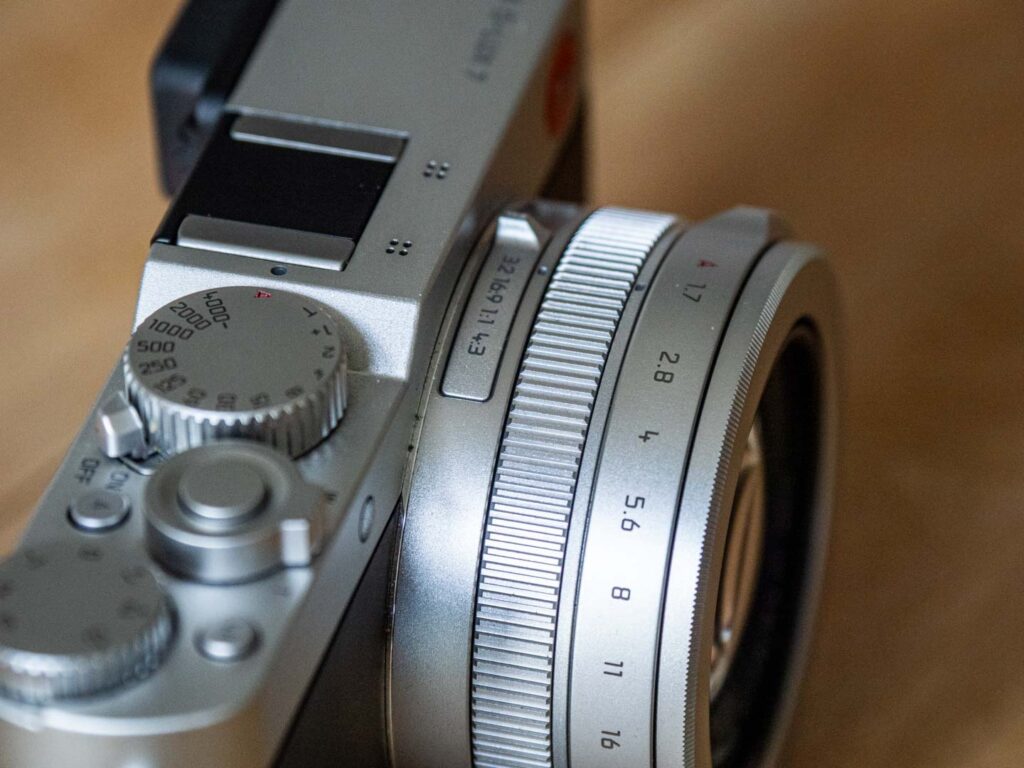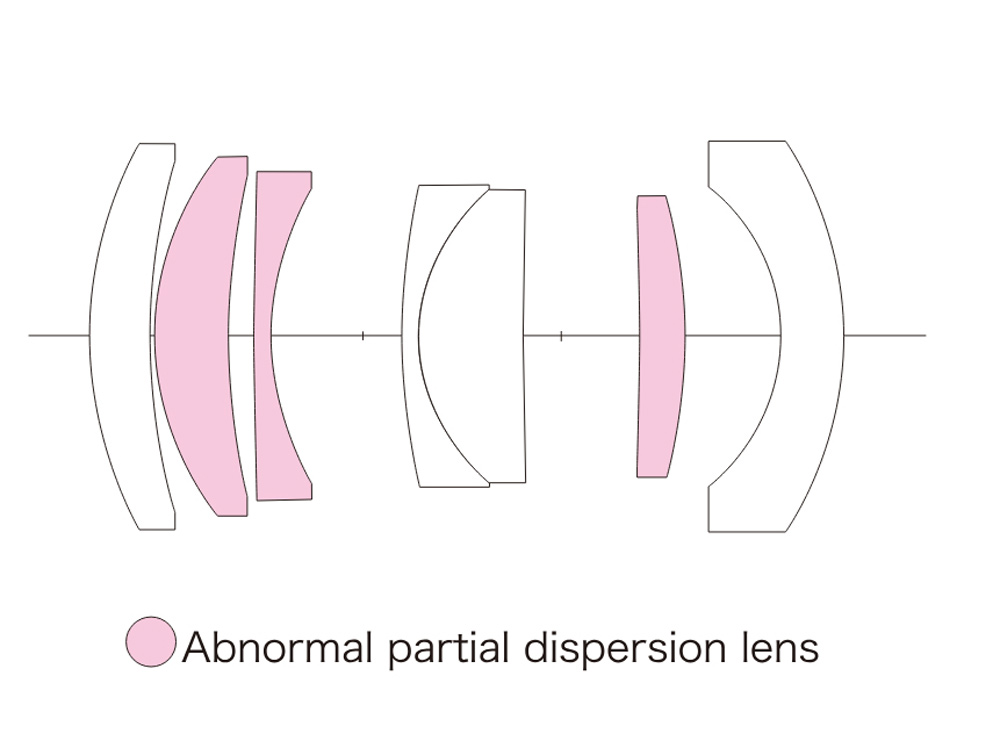A new camera — always an enticing prospect. Be it a newly launched product or the new acquisition of some classic model: we all enjoy the thrill of such a novelty. And the industry is always ready to whet our appetite. Here we go with a multi-course menu, including one or two interesting side-dishes (aka lenses and other accessories).
Leica D-Lux 8: A lively discussion
Our revelation about the missing zoom features on the new Leica D-Lux 8 caused quite a stir when it was published a week ago. It was also picked up by other sites, including Leica Rumors. Macfilos readers were overwhelmingly disappointed that the step zoom (giving the ability to select fixed focal lengths of 24, 28, 35, 50 and 75mm) and the capability of reassigning the focus ring to the zoom function, had been removed from the D-Lux 8. Most felt that these features should have been considered essential and should have been carried over from the previous D-Lux 7 model.


With likely identical performance to the D-Lux 7, the D-Lux 8 is sold on simplicity, including the adoption of Leica menus and fewer controls to bring the camera into line with other models, particularly with the Q3. Many potential buyers have been left bemused by the curious decision to disable all zoom functions, apart from the small lever on the top plate. In common with the Macfilos editorial team, they find the lever inconvenient and awkward to use. Whatever the decision on the step zoom, most people think it should at least be made possible to reassign the fucus ring to the zoom function to allow a more natural control.
The new Pixii Max can be pre-ordered now
It is one of the most interesting new camera launches this year: The new Pixii Max is the first full-frame digital rangefinder camera made by a company besides Leica.
The small French company, run by David Barth, has worked hard to enter what might be called the Premier League in camera manufacturing. The optical viewfinder in itself is a challenging piece of technology, but the rest of the camera shows surprising innovation and is no small feat in itself.
One of the most remarkable features of this new camera is the fact that the small company a) has managed to find a supplier for the 24.5 MP sensor; b) can organise manufacturing in comparably small batches; and c), can design and have manufactured a more capable, improved viewfinder. Furthermore, Pixii has also been able to adhere to the set timeline.
The New Pixii Max can now be pre-ordered. Initially, existing customers and people on the pre-preorder list will be supplied.
But it comes at a price
The new Pixii Max comes in a 32 GB and a 128 GB versions. Since there is no card slot, the camera relies entirely on internal memory, so initial choice of memory is important. The camera is supplied in matte black or what they term space grey. The prices are €3,999 for 32 GB model and €4,249 for the 128 GB version. This represents a discount for early adopters. The regular prices will be €4,159 and €4,409. Bear in mind that all this is without tax. In France, for example, a Pixii Plus will thus cost nearly £5,300. That’s more than many new cameras cost, but considerably less than Leica’s current rangefinder model, the M11.
Two more interesting facts: The current model, Pixii+ – which we reviewed extensively here on Macfilos – will continue to be available (from €2,699 plus VAT). Currently, the “small” Pixii with its APS-C sensor is out of stock. But the manufacturer promises more will be made. And, in a very fair move, Pixii offers loyal customers an interesting upgrade. Older Pixii cameras can receive a new full-frame sensor and some further upgrades from €1,499 plus VAT. The Pixii website is certainly worth a visit.
No need for a new camera? Think of a lens, for example a 50/2.2
We do not know what the people from Cosina/Voigtländer have for breakfast, but it must work wonders. The stream of new lens launches is relentless and produces some fascinating designs. Their latest announcement (or one of their latest, we tend to lose sight of the sequence) is a another 50mm lens. The preceding launch in this all-time classic focal length was a 50/3.5 Heliar, a very vintage oriented lens, and before that came the incredibly good 50/2 APO which has only one disadvantage, it’s size and weight. This lens was featured in our M Files series, here is our review. Now comes a 50/2.2 (see here first thought from Fred Miranda). So, if you don’t want or need a new camera, this new design could come in handy for you.


It might seem odd, but here’s a clever idea: Sacrifice a bit in speed and win a lot on small size and image quality. The 2.2 maximum aperture is in the middle between the classic 2.0 and the 2.4/2.5 of the much-loved Leica Summarit line. The result is a fairly fast 50mm lens which still allows for creative play with depth of field. The Color Skopar designation puts it in line with other Skopar lenses, which are characterized by super compact designs. We already reviewed in our M Files series the pancake-type 21/4, the equally small and lightweight 35/2.5 and the astonishing new 28/2.8. All of them turned out to be good, and in value for money terms, even excellent. And Keith James has just shown in a recent travel story from California how good the Color-Skopar 21/3.5 can be.
A new experience without a new camera
The new Color-Skopar (the “Color” is more of a historic allusion when the designation signalled advanced coating, making the lens particularly suitable for colour films) will weigh only 135g, and its quite advanced seven-lens design makes do without aspherical elements. The overall length of just 30mm (all technical data via photoscala.de, their quoted source is Voigtländer) makes it almost a pancake lens. It is available in back and silver for €649, lens hood included, for example from Jo Geier in Vienna. The new lens could certainly mean an exciting experience for a lot less than a new camera will cost.
And the next 50mm lens from Voigtländer is also ready for take-off: It will be the Apo-Lanthar 50/3.5 at a price from €699 where ultimate image quality might be achieved by dispensing with speed. Again, what are they doing at Cosina to achieve such innovation dynamics? We will catch up at Macfilos, and we hope we can provide the one or the other review in due time. That is, when we have had the opportunity to use the lens in real-life settings for weeks or even months. As you know, we do not strive to get our reviews out in record time, but we do, aim for the most practical assessments after serious use.
New camera with an L-Mount? You’ll be needing one of these zooms
What if your new camera is part of the L-Mount system? Perhaps you have splashed out on an SL camera from Leica. Or one of the superb S5-series cameras. You might therefore also be in the market for a new lens.
A very common choice in such a situation would be a mid-range zoom, such as a 24-70mm. Or, you could stretch to a slightly longer focal length, such as a 28-105mm. But what about maximum aperture? There are several attractive f/2.8 fixed aperture options out there. But, if you are after that longer range, you will probably be dealing with an f/4 lens.
So, as we often find, there are trade-offs to be made in lens choices. Maximum aperture, focal-length range, weight, and cost are frequently competing factors. The mid-range zoom domain is a classic example of this phenomenon. Nonetheless, it’s not difficult to find some useful perspectives on YouTube these days.
For the L-Mount world, here’s a very thoughtful perspective on the choice between a Sigma 28-70mm and a Panasonic 24-105mm. The presenter, Josh Cameron, talks a mile a minute. Once or twice I wondered if his voice had been artificially sped up. But, I think it’s just that there is, in fact, a frictionless conduit between his brain and his vocal cords.
And, here is a less frenetic comparison of a similar pair of options from the Canon world.
And, if it has to be Leica, here’s a comparison between the superb 24-70mm and the magnificent 24-90mm zooms. Your bank account and your biceps are going to take some punishment, though!
Best of luck with your decision!
If you want a new camera from these brands, you might be waiting a while
Ironically, you might have decided to buy a new camera, but are unable to get your hands on it. It seems more and more camera manufacturers find themselves unable to meet the demand for their hot new recent releases.
This has been a perennial problem for Leica, whose prospective customers invariably find themselves on waiting lists. For example, we reported extensively on the extended wait Q3 purchasers faced following its launch. But, it seems other manufacturers are now getting into the ‘unobtainable’ game.
In particular, Fuji has been unable to meet demand for its stylish new X100VI model. This has become the camera that everyone wants. So, is the company’s inability to meet demand a sneaky ploy to stoke desirability, exclusiveness, and price? The team at PetaPixel don’t think so. They attribute the situation to underestimating demand, and continuing post-pandemic supply chain challenges.



Looking for a new camera for a mountaineering trip, such as here near Galtür in Austria? The Fuji X100VI is excellent — if you manage to get one… Images by Jörg-Peter Rau
Feel free to let us know in the comments what your experience of wait lists have been. And, when you did get your hands on your new camera, was it worth the wait?
Want to contribute an article to Macfilos? It’s easy. Just click the “Write for Us” button. We’ll help with the writing and guide you through the process.







I’m no lens designer but you have to wonder about that .2 in the 50mm 2.2 spec.
Is that just Cosina being super accurate? I’m much in favor of a slower lens over a faster one if it gives better quality results and a more compact form factor.
The comparison between the Leica zooms was also interesting. Glad I went for the 24-70, mine is extremely well made and definitely up to Leica standards.
My problem is that there are so many choices available in used lenses in my chosen system (Nikon F-mount), that I could go on practically forever trying out lenses and combination of lenses without even concerning myself with new products.